This WordPress blog is not public.
The Large Red Damselfly metamorphosis is
a wildlife sighting I had never ever witnessed before. Who loves those unforgettable moments … moments that surprise you the first time you see them. And moments that money can’t buy? Well this weekend I had a moment like that when I viewed the gradual metamorphosis of a
Pyrrhosoma nymphula. But firstly I have to confess to having a murky pond. It’s nothing inspiring – but something that’s there as a benefit to the wildlife in the garden. Truth be told it’s a bit of an embarrassment this year. It’s full of bubbles of algae and blanket weed and who only knows what else lurks down in the deeps. I’ve just never got around to cleaning it out yet.
BUT maybe just as well!
 |
| Pyrrhosoma nymphula – The Large Red Damselfly – probably the easiest to spot in Scotland |
Most years I patiently wait for the large red damselflies
Pyrrhosoma nymphula to appear. Though I might only see them 2 or 3 times a year as they mate above the pond water. (You can view my photographs of the mature adults here in the leavesnbloom garden:
The Red Damselfly Visit).
On Saturday while weeding I entered into the flightpath of a damselfly… the weeding could wait – this moment couldn’t!
I rushed quickly indoors and changed over to the macro lens on the camera hoping that there would still be some activity when I got back out again …well ‘some activity’ is a bit of an understatement! …and here’s the rest of the story.
Pyrrhosoma nymphula – The Large Red Damselfly
Firstly a little background information:
They are members of the Odonata family (the toothed ones) and look like very delicate invertebrates. But don’t let that fool you as they are ferocious predators. After the female has laid her eggs on the vegetation in the pond the larvae (nymphs) spend up to two years in the water. They molt their larval skeleton many times over until the nymphs are ready to emerge as adults. Once an adult they have a life expectancy of around a few months.
Unlike butterflies the Odonata are hemimetabolous. As a result they don’t have an pupal stage before coming an adult and they undergo what’s called a ‘gradual’ metamorphosis.
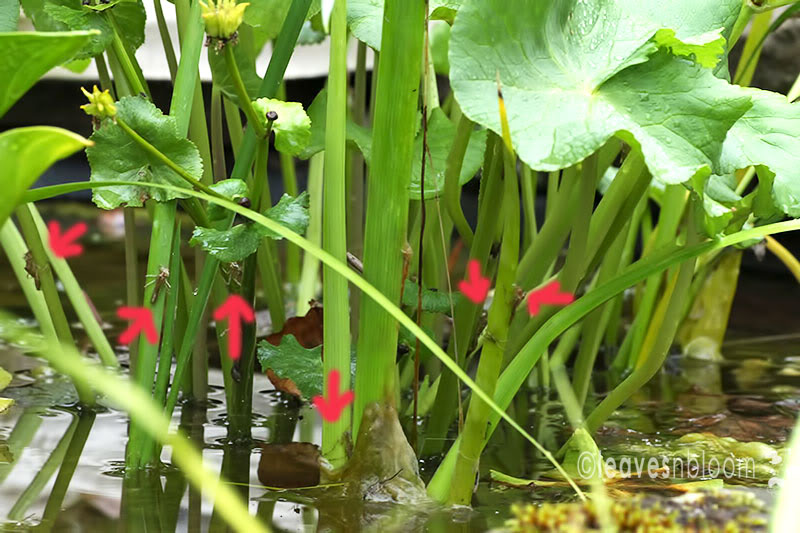 |
| The red arrows show the nymphs preparing to emerge as damselflies though there were loads of empty skeletons aswell on the stems. |
Just before their last molting the nymphs climb up from the water on to the aquatic plants like in the picture above. There on the stems they wait until their larval skeleton splits at the thorax . Then it drags itself out totally transformed as a beautiful damselfly…but hold on…we haven’t got to that beautiful stage yet!
Here’s one of many nymphs that was clinging to the undersides of the Caltha palustris leaves in the pond.
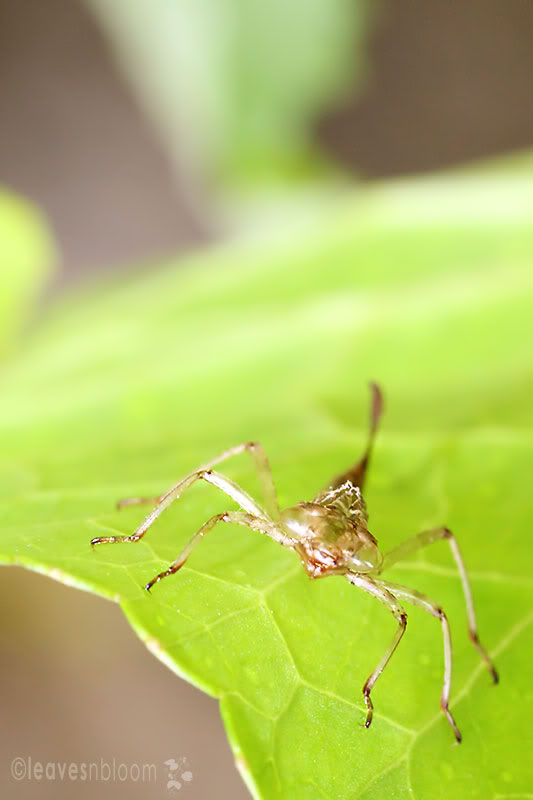 |
| Pyrrhosoma nymphula nymph |
While elsewhere on the Caltha I found another nymph with a more defined tail.
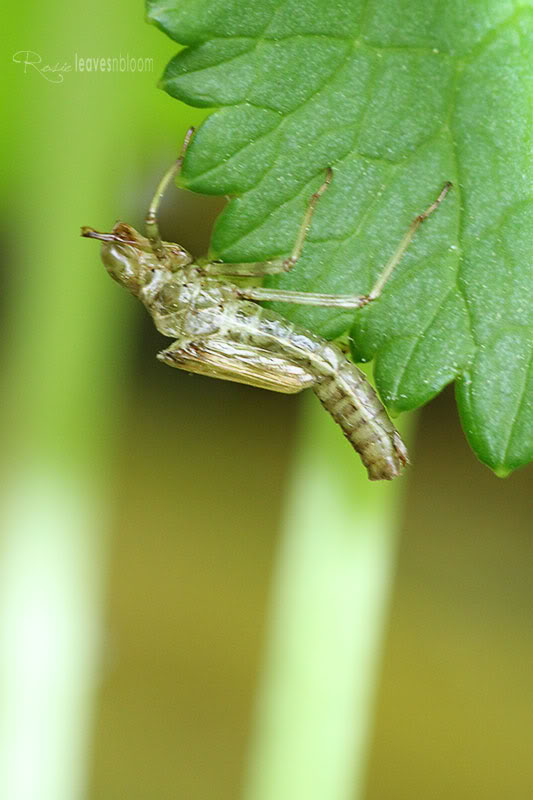 |
| Pyrrhosoma nymphula nymph |
The Gradual Metamorphosis Stage
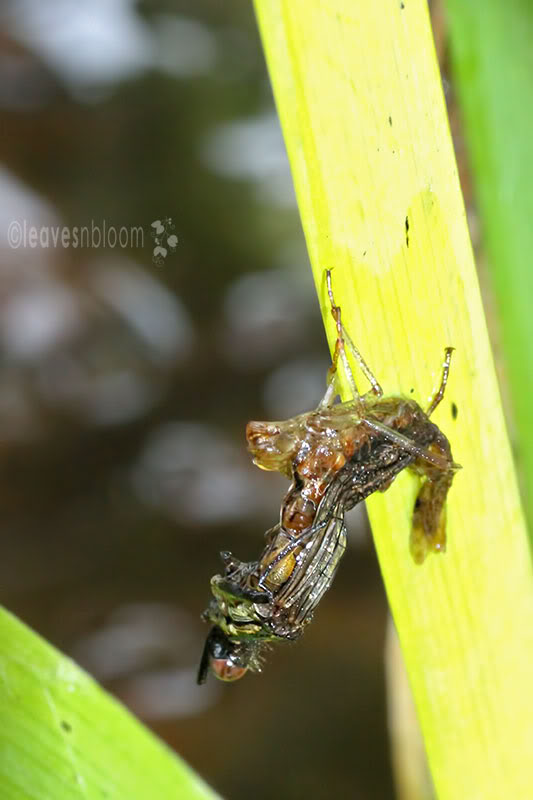 |
| A damselfly dragging itself out of the thorax section of the larval skeleton |
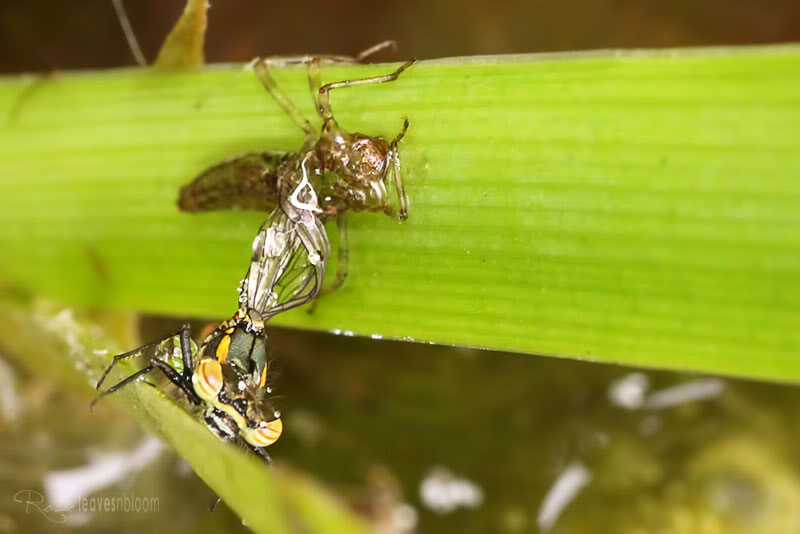 |
| just the wings left to drag out from the skeleton |
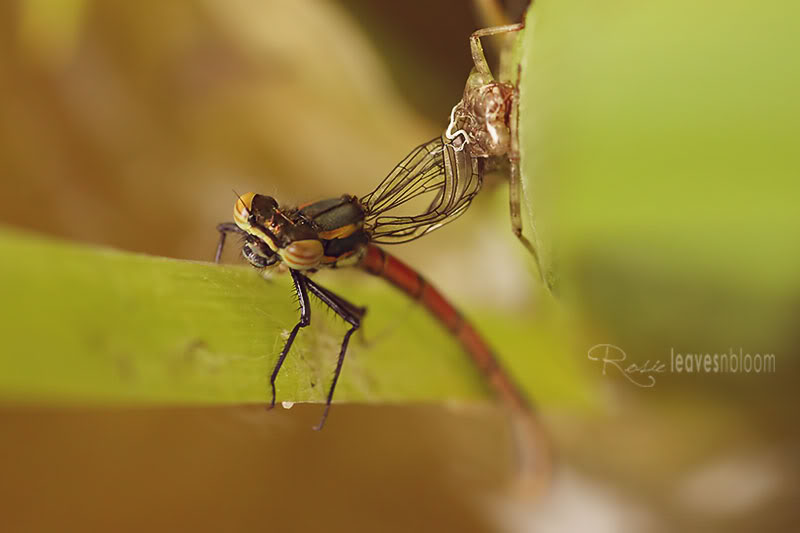 |
| Red damselfly about to fully emerge climbing up an iris leaf |
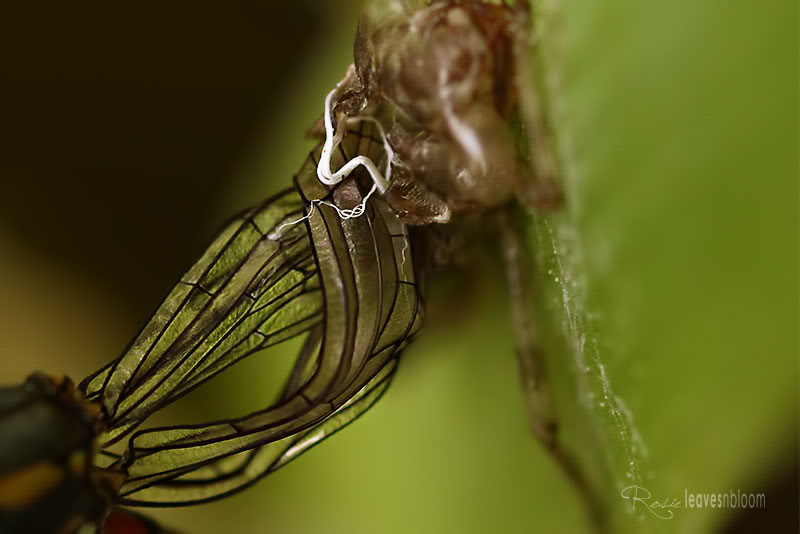 |
| detail of the wings still emerging from the larval skelton |
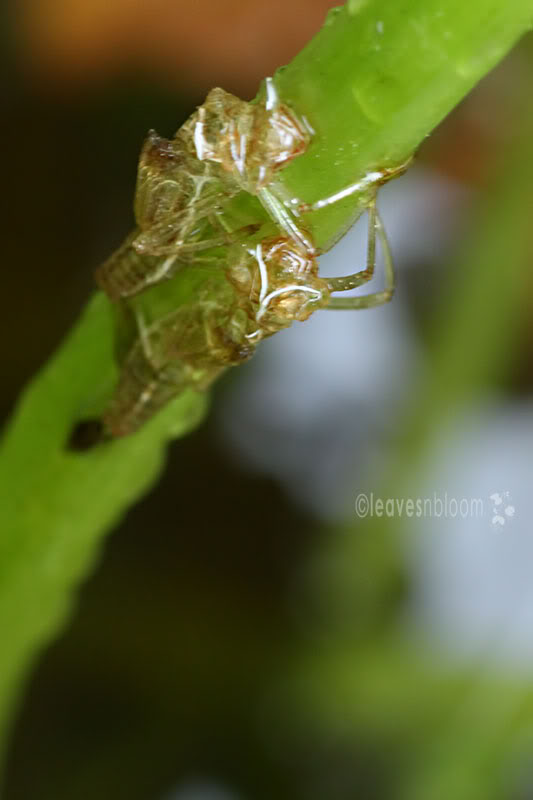 |
| some empty larval skeltons |
The Teneral Stage
This is the most dangerous time for the damselfly. It still cannot fly and its body is soft and easy prey for birds.
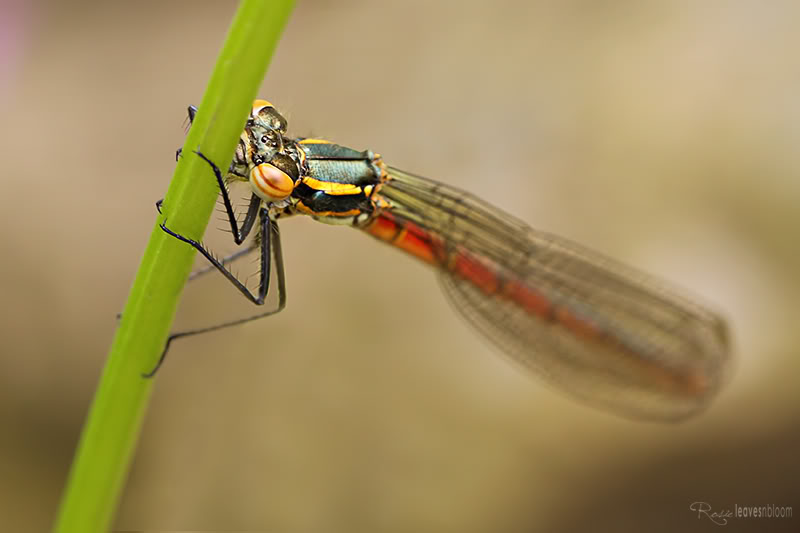 |
| Teneral (newly emerged) large red damselfly |
Slowly in the sunshine the large red damselfly moves up the stem of the Caltha fluttering it’s wings in bursts. Consequently it drys them out while pumping blood through its veins.
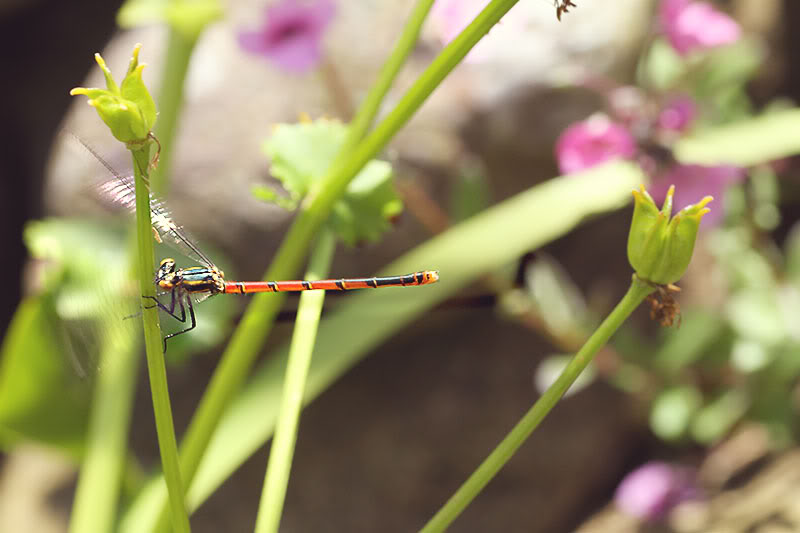 |
| drying it’s wings in the sunshine |
Finally once it reaches the top of the stem it is strong enough and it flies away on its maiden flight seeking a mate.
The Beauty Stage
This beautiful insect used to live in my murky pond! Over the next few weeks its red colour will deepen even further.
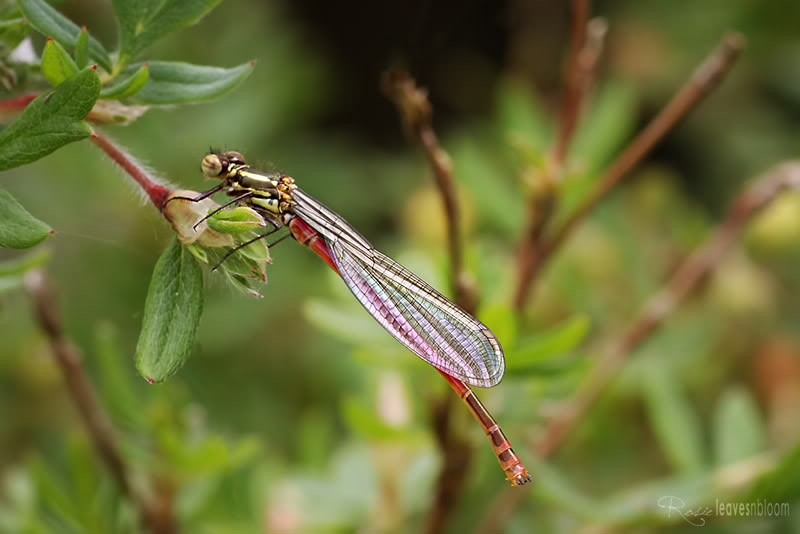 |
| resting after its maiden flight on the potentilla shrub next to the pond. |
Nature may be a broken creation, groaning and longing for its day of restoration but even today it reveals the awesome brilliance of its Creator.














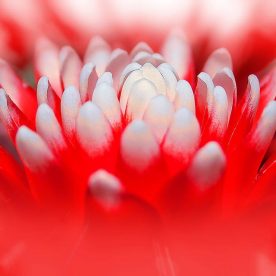

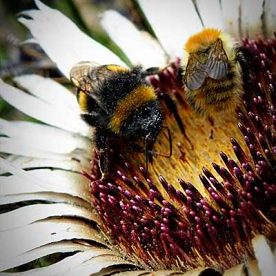
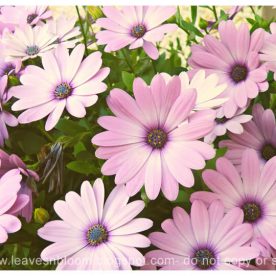
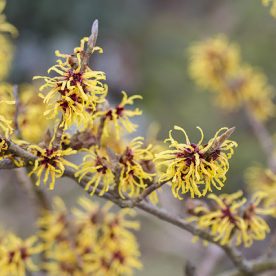
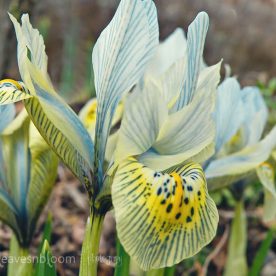
LIZA AND JOHN'S GARDEN
HI Rosie: Great photography and the patience to follow the progression from start to finish.
Have a wonderful day,
John
Bernie H
What a fantastic experience. Thanks for sharing the whole thing with us through your wonderful shots.
Jayne
Wow Rosie – amazing macro photography. Talk about being in the right place at the right time.
Mark and Gaz
Fantastic photography! The metamorphosis is well captured!
Pieces of Sunshine
Wow, stunning photos of an amazing process. The wings look like stained glass as they are being extracted from the shell. Wonderful captures Rosie.
Caroline Gill
Absolutely stunning and fascinating, Rosie. I should think this post took hours to do! I have only seen one Red Damsel this year so far, but after a very slow start, we are beginning to see blue ones of various varieties. I don't have a pond and haven't seen any in the garden. but since I almost collided with my first 2012 damselfly in the carpark at Sainsbury's, who knows, I might have a garden visitor after all … esp. as there is lots of water around!
naturestimeline.com
They are truly amazing creatures and you have created some wonderful captures right there.
Regards
Tony Powell
Heather
that is amazing! Gorgeous captures Rosie! How lucky to witness that!
N8trGirl April
Oh, my dear. Never dreamed I could get so involved in the SAGA of the large red damselfly! You are truly a photo-journalist!
Love you!
alidee
Nature & patience combine to produce wonder xxx
Amanda
Absolutely AMAZING! Your photos are perfection! What type of macro lens do you use? Thank you so much for sharing these pictures!!
Michelle Reed
GASP! Holy smokes!!!
THUMP!
These are AMAZING!!! I'm sitting here just floored at how creative our Father is and all the intricate details He put into His creation — and wow! What *perfect timing* in that you were *there* and your eyes were open to what was happening around you!!! EEK! I can just *feel* your excitement and nervousness as you ran into the house to get your camera – and then *hear* your joy as you snap away and then get these images ready for us!
Wow. Just WOW.
;-D
xoxo
Chell
Kia
The Red Damselfly is a beauty and your pics are AMAZING! I'd love a macro lens! Maybe I should start writing a letter to Father Christmas. 😉
James Missier
That's amazing experience to watch these damselfly taking off in their virgin flight.
I thought they only lived a day and die after mating & laying eggs?
Andrea
OMG, what a wonderful experience you just had! The post is an amazing reference too, with very vivid beautiful photos. I love that translucent wing still trying to emerge from the exoskeleton, and i can't imagine the contortions it did while emerging. I love the photos, the more i envy the macro lens, haha!
Do you know i just saw a damselfly or dragonfly nymph this year!!! A joined a friend to a waterfalls and i was amazed it doesn't look like the adult at all. I live in the uplands without bodies of water so we dont see these creatures often. So this is a novelty for me. thanks.
Curbstone Valley Farm
A truly fabulous post Rosie! Those pictures are exceptional. You were so fortunate to be able to witness the entire transformation. The veining on the wings as the damselfly emerges is just stunning. We have a lovely blue damselfly here, but they're so fast, and rather skittish, it's almost impossible to photograph them.
Richard Havenga
Rosie!
Your fine photographs earn all the superlatives from the previous people.
In particular, I love the emergent shots 5,6,7,and 8. Seven is truly remarkable. Photo ten, the Teneral Stage is marvelous. The last image shows exquisite iridesence on the membranous wings.
Thank you for this extraordinary experience.
Richard
James Missier
I have nominated you for the Versatile Blogger award. Check it out in my latest post. You have a great day!
Patricia Bloomfield
http://www.youtube.com/watch?v=F1Ix930q3E8
I've found a short educating video)) Hope you enjoy it)
Carole
Hello Rosie – I found you via Loose & Leafy's Tree Following Project and I'm enjoying your website and particularly love this damselfly story. I know I'm coming to it 2 years late! but I'm so impressed with your camerawork generally – it motivates me to improve. I will continue browsing and look forward to following your tree for 2014.
Best wishes, Carole